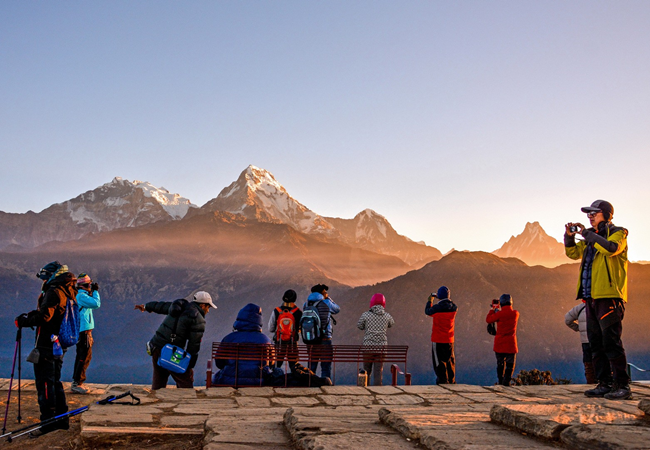Here’s an in-depth overview of seven key things to keep in mind before setting off on a trekking expedition in Nepal.
Certainly! Trekking in Nepal, as thrilling and exhausting as it is, also has a number of gifts to offer: glorious landscapes, unique cultural encounters, and unforgettable experiences. Nevertheless, prior to setting out a similar route for trekking purposes, there are some crucial issues to bear in mind because the safety and fun of the journey depend on them.
1. Choosing the right company and right trek
Nepal Gateway Trekking possesses a great variety of trekking itineraries that can be categorized as easy, moderate, or difficult according to the ranging factors of difficulty, length, and some specific charms. Do enough studying and go for a hike that is suitable for your fitness level, interests, and the free time you have. High-end tourist attractions like the Everest Base Camp Trek, Annapurna Circuit, and others like the Langtang Valley Trek, where a wide range of preferences and skill levels are available, are the most popular, while off-the-beaten-track programs for less-crowded naturalists and those who want to explore a different experience can also be designed.
2. Physical fitness and preparation
It is common to spend a lot of time walking while going trekking in Nepal. One goes through many uphills and downhills and eventually reaches an altitude higher than usual. Thus, the foremost condition is that you stay fit enough to take part in such a trek. Do the cardio, strength training, and endurance trips to be the part of your body fit for trekking’s demands. Furthermore, choose acclimatization hikes instead to align an individual with the thinner air and mitigate the health risks.
3. Seasonal considerations
The scheduling of your trek is important because of the weather, hike access, and your experience. Nepal experiences four distinct seasons: the meteorological seasons are split into spring (March to May), the hot and wet summer season, which also comprises the monsoon (June to August), fall (September to November), and the chilly and dry winter (December to February). Through the autumn and spring, trekking is highly recommended because those are considered to be the best seasons for trekking due to the clear skies, mild temperatures, and stable weather conditions. Although there are some treks that are also possible to tackle during the winter months, those hide a truth of less crowdedness on the trails and snow-white landscapes.
4. Permits and regulations
Most mountaineering areas in Nepal require trekkers to acquire licenses to enter the checkpoints. The permits may vary according to the trekking route and satisfy the requirement, and they can either be obtained by trekking agencies that are registered or by the Nepal Tourism Board that regulates them. Furthermore, acquaint yourself with the surrounding legislation, cultural sensitivity, and management, all aimed at ensuring that your trek is ethically done and that the environment and people of the area are respected.
5. Altitude sickness awareness
Altitude sickness is a serious issue concerning the Himalayan-range countries. Altitude sickness, also known as acute mountain sickness (AMS), is a referral symptom of altitude sickness among high-altitude trekkers. For AMS, a general health situation, the symptoms involve frequent headaches, nausea, dizziness, and fatigue, but at a severe stage, the problems may include conditions like high-altitude pulmonary edema (HAPE) and high-altitude cerebral edema (HACE), which can sometimes result in dangerous outcomes. Give immediate first aid and attention; drink enough water; walk slowly while climbing; and if your condition gets worse, then go downward.
6. Packing essentials
Picking the most suitable outfit from equipment and gear is vital to making your trekking journey corresponding as well as secure. For weather conditions, altitude above sea level, duration, and accommodation of the trek, the right kit is necessary. Base kits include: boots, socks, tops, and undershirts; a raincoat; thermal pants and shirts; a sleeping bag; trekking poles; a water purification system; a first-aid kit; sunscreen; sunglasses; headlamps; and an emergency beacon. That is to say, everything that will assure stability, security, and health during the most challenging conditions that might be encountered during all kinds of activities. Also, folder a part of the cash denomination in local currency for the purchase of small merchandise and tips.
7. Travel insurance and emergency preparedness
Acquiring seasonal insurance whose scope includes walking problems, emergencies, evacuation, and trip cancellation is an important matter when trekking in Nepal. Verify the fact that your insurance policy involves trekking in high altitudes and, if the need arises, medical evacuation by helicopter. Acquaint yourself with the emergency procedures, the local authority’s contacts, and medical facilities on the upcoming journey.
Conclusion, this is done to avoid unnecessary waste that may be followed during this trip in order to enjoy your travel adventure in Nepal and also to ensure your safety, comfort, and satisfaction while on the trip. Ever be it, practice the highest standards of ethical trekking behaviors, embrace cultural matters, and adhere to guidelines from senior guides and trekking companies. In the case of your Nepal trekking expedition, you can make a trip on the route that is tailored to your abilities and schedule. Therefore, your trekking in Nepal has a chance to be a truly transcendent experience among the most beautiful peaks possible.




























































































































































































